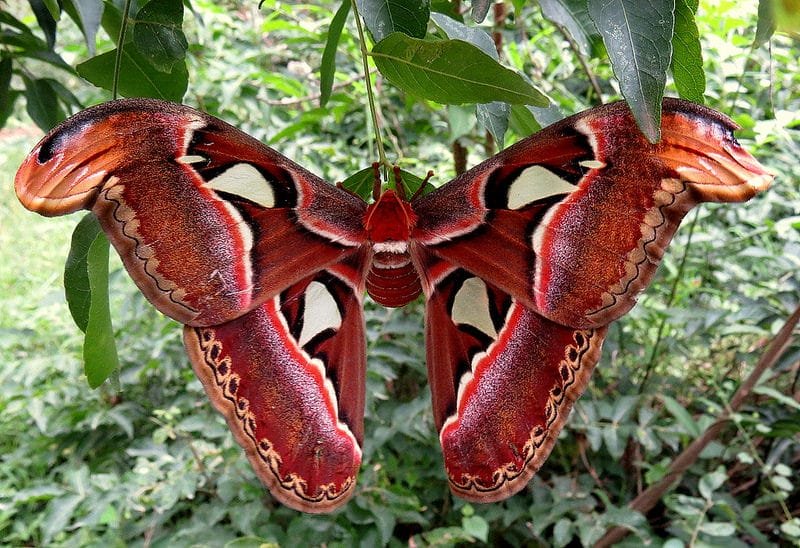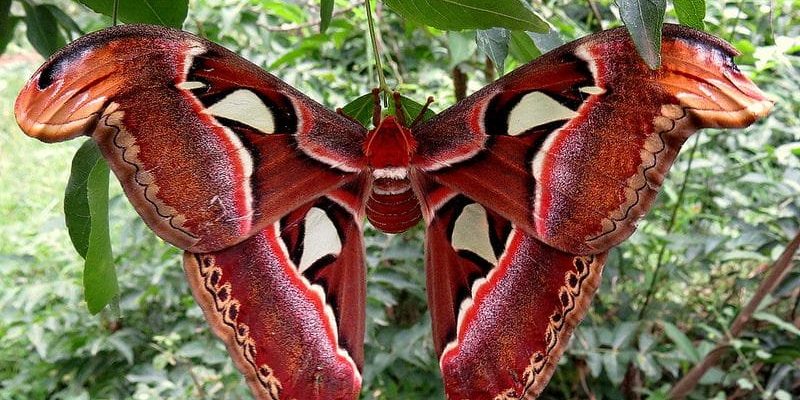
As you take a sip, you might mention how the Atlas moth is named after the Titan Atlas from Greek mythology. Just as Atlas was said to hold up the heavens, these moths seem to carry the beauty of the natural world on their wings. They flutter through the tropical and subtropical regions of Southeast Asia, mostly found in countries like Indonesia, Malaysia, and India. But what led them to develop such impressive wings and distinctive patterns? Let’s explore the captivating evolution and history of the Atlas moth.
Origins of the Atlas Moth
The story of the Atlas moth begins millions of years ago. These moths are part of the Saturniidae family, which is known for its large and often vividly colored members. The evolution of the Atlas moth can be traced back to the ancient ancestors of moths that roamed the earth during the Mesozoic era. Over time, through a process known as natural selection, these moths adapted to their environments, developing features that would help them survive and thrive.
It’s intriguing to think about how their size has played a role in their survival. Larger wings can help with gliding, making it easier for them to navigate their rainforest homes. In an environment filled with predators, such as birds and other animals, being large can also be a deterrent. If a bird sees a big, colorful creature, it might think twice before attacking. This evolutionary trait helps the Atlas moth stay safe while also showcasing its stunning beauty.
Another fascinating aspect of their origins is their connection to the different habitats they inhabit. The Atlas moth prefers humid, tropical environments where they can find food and mates. Their life cycle, from egg to larvae (caterpillar) to adult moth, reflects the unique needs of their ecosystem. As caterpillars, they feed on the leaves of certain plants, which is vital for their growth. This specific relationship with their habitat has allowed them to thrive in certain regions while remaining absent in others.
Physical Characteristics of the Atlas Moth
When it comes to the Atlas moth, it’s hard to miss their incredible size. They are one of the largest moth species, with wingspans reaching up to 10 to 12 inches. That’s about the size of a small dinner plate! Their wings are not just large; they also exhibit beautiful patterns and colors. The upper wings feature a rich combination of browns and oranges, while the underside is a softer, more muted palette designed to camouflage against tree bark.
You might be curious about the purpose of those striking patterns. Well, here’s the thing: the unique markings on the wings serve as a form of defensive mimicry. The tips of their wings resemble the heads of snakes, deterring potential predators who may see the wings fluttering among the foliage. This clever design is an evolutionary advantage that helps them blend into their surroundings while also warding off threats.
Furthermore, the Atlas moth’s bodies are also designed for survival. They possess a thick, furry coating that helps them retain moisture in their humid habitats. Their legs are strong and sturdy, allowing them to cling to tree branches securely. Overall, these physical characteristics are not only stunning to look at; they serve specific purposes that help the moth adapt to its environment.
The Life Cycle of the Atlas Moth
The life cycle of the Atlas moth is truly a wonder to behold, taking them through several fascinating stages. It all starts with the female moth laying her eggs on the leaves of a suitable host plant. This is crucial since the hatching caterpillars will depend on these leaves for food. Typically, a female can lay anywhere from 100 to 200 eggs, ensuring that some will survive despite the many challenges they face.
Once the eggs hatch, the caterpillars emerge. For the Atlas moth, these young larvae are voracious eaters. They feed on the leaves of plants such as guava, jackfruit, and citrus trees, growing rapidly and often changing their skin several times through a process called molting. During this stage, they can reach lengths of over 4 inches. Imagine them munching away, enjoying their meals while simultaneously preparing for the next phase of their lives.
After around a month of feeding, the caterpillars will find a safe spot to pupate. They spin a cocoon that may look quite different from traditional cocoons; Atlas moths often form a more secure casing for their transformation. This pupal stage can last anywhere from two weeks to several months, depending on environmental conditions. Once they emerge as adults, they face the challenge of finding mates and continuing the cycle of life. It’s a tough journey, but each stage is a vital part of the Atlas moth’s story.
Cultural Significance of the Atlas Moth
The Atlas moth isn’t just a fascinating insect; it also holds a unique place in various cultures throughout Asia. In some regions, these moths are seen as a sign of good luck or prosperity. People admire their beauty and often associate them with transformation and rebirth because of their complex life cycle.
In traditional Chinese medicine, the Atlas moth has been used in some remedies, showcasing a blend of nature and cultural practices. However, it’s important to note that while some utilize it, many cultures also celebrate the moth purely for its beauty. In art and local crafts, its image often appears, embodying the essence of nature’s elegance.
Moreover, these moths have sparked curiosity and admiration, leading to their representation in literature and folklore. Stories often revolve around themes of transformation, echoing the changes the moth undergoes throughout its life. Whether it’s through paintings, festivals, or tales, the Atlas moth continues to inspire people and cultures around the globe.
Conservation Efforts
With the Atlas moth’s beauty drawing attention, it’s essential to consider their conservation status. Like many species, they face habitat loss due to deforestation and urbanization. As rainforests are cut down, their natural habitats disappear, threatening their survival. You might wonder: what can be done about this?
Conservation efforts focus on protecting the habitats where these moths thrive. Organizations work to promote sustainable practices in forestry and agriculture, helping local communities value their natural resources without destroying them. By raising awareness about the importance of the Atlas moth and other species, these efforts aim to foster a sense of responsibility for the environment.
Additionally, breeding programs in captivity can help maintain the Atlas moth population. These programs often focus on educating the public about the moth’s role in the ecosystem while also providing a safe environment for breeding and research. It is a hope that with these efforts, future generations will continue to marvel at the beauty of the Atlas moth.
The Atlas moth is more than just a pretty face in the insect world; its evolution and history reflect a complex interplay of survival, adaptation, and cultural significance. From its captivating life cycle to its enchanting physical features, every aspect of this moth tells a story worth sharing. As we learn more about these incredible creatures, it becomes clear that they deserve our admiration and protection.
By understanding their journey and the importance of their habitat, we can contribute to ongoing efforts to preserve the beauty of the Atlas moth. After all, these large-winged wonders are not just fascinating aspects of nature; they remind us of the delicate balance within our ecosystems and the responsibility we hold to protect them.

